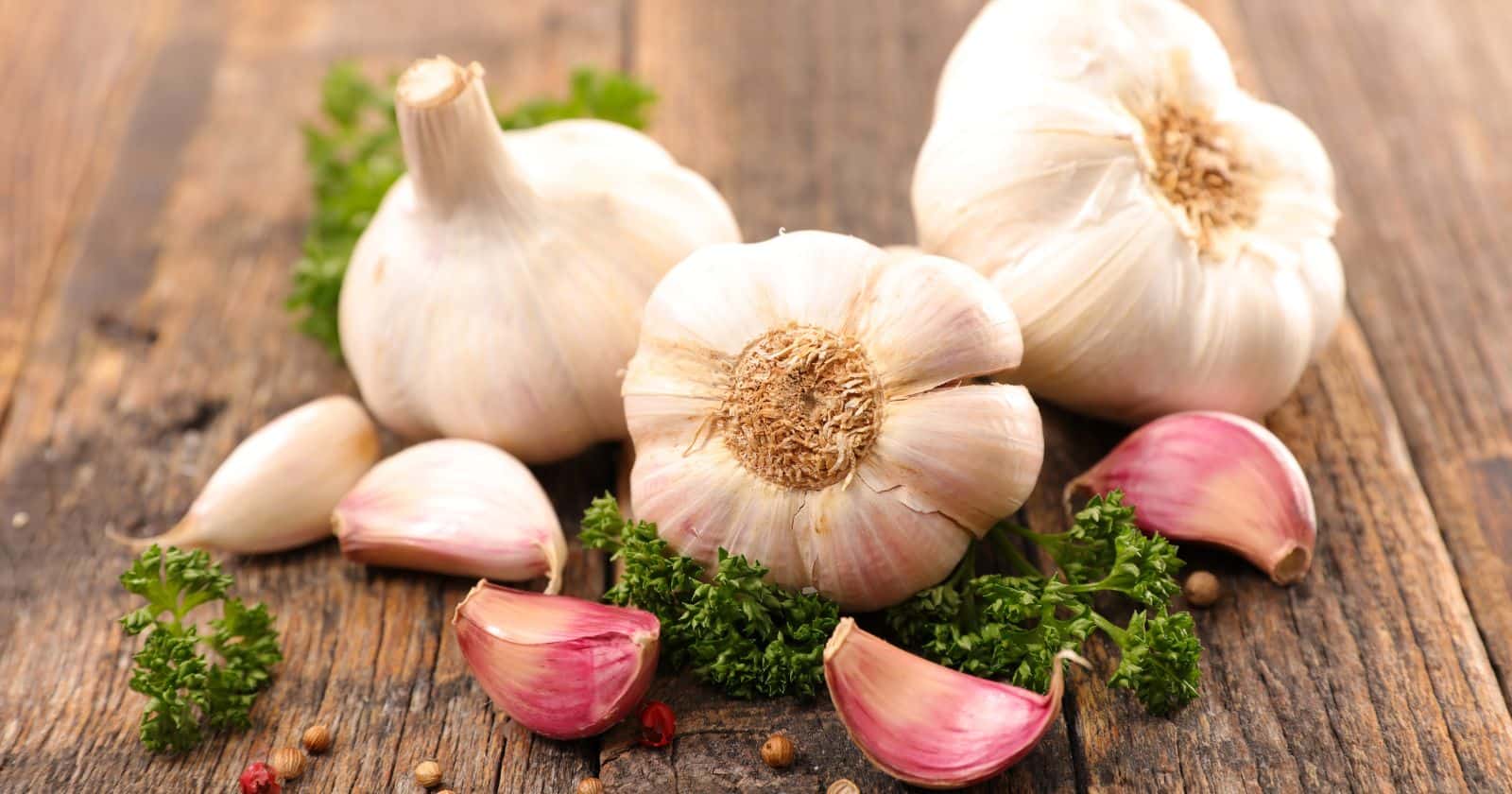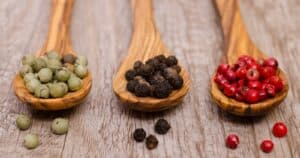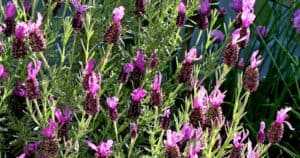Are you looking for a powerful ingredient that packs a punch regarding nutrition and health benefits? Look no further than garlic!
This herb is not only delicious but it’s also been used for thousands of years for its medicinal properties. If you want to support your heart and blood system, garlic may be just what you need.
Whether you’re a culinary enthusiast or just looking to improve your health, garlic is an ingredient that should be considered.
In this article, we’ll explore the nutritional value of garlic, including its potent compounds and how they benefit our health.
We’ll also discuss various ways to enjoy garlic, from raw to cooked and even in supplement form. Let’s dive in!
A Brief History of Garlic and Its Uses
Garlic has a rich history, dating back thousands of years. One of the oldest horticultural crops, it has been used throughout ancient cultures like the Babylonians, Egyptians, and Chinese. In centuries past, garlic was primarily used for medicinal purposes, ranging from helping digestion to curing diarrhea and even ridding the body of worms.
However, as society developed, the culinary uses of garlic grew in popularity, and it became a staple ingredient in countless dishes from around the world.
One of the earliest known uses of garlic was by the Sumerians, who used it for its healing properties around 2600-2100 BC. But the Babylonians, Egyptians, and Chinese were also early adopters of garlic, integrating it into their diets and traditional medicines.
According to historical records, the Egyptians even used garlic as a form of currency, which was also used in the embalming process of mummies.
As garlic’s popularity spread, it made its way into the cuisine of many cultures. It is believed that ancient Greeks and Romans also used garlic, and it eventually became a staple in Mediterranean cuisine. The use of garlic even made it across the Atlantic, as it was brought to the Americas by European settlers.
Today, garlic remains one of the most widely used seasonings in the world, with various culinary and medicinal applications.
The use of garlic extract supplements and other forms of garlic for medicinal purposes has become increasingly popular in recent years. While garlic has long been associated with flavoring dishes, studies have shown it may have several health benefits. Some of these benefits include lowering cholesterol, reducing the risk of heart disease, and even fighting certain types of cancer.
The Health Benefits of Consuming Garlic Regularly
Garlic is a superfood that has numerous health benefits. It can lower bad cholesterol, reduce the risk of lung and brain cancer, protect the heart, and regulate high blood pressure. The immunity-boosting qualities of garlic also make it a powerful tool in the fight against bacteria, viruses, fungi, and parasites.
Consuming garlic regularly can also improve skin health, protect food from bacteria growth and treat athlete’s feet.
Some of the health benefits of garlic:
- Lowers Cholesterol: Garlic is known to reduce cholesterol levels in the body, terrible cholesterol. Studies have shown that consuming garlic can lower total cholesterol by about 15 mg/dL and LDL (low-density lipoprotein) cholesterol by about 10 mg/dL.
- Fights Cancer: Garlic contains sulfur compounds that boost the body’s immune system and fight cancer-causing agents. Regular consumption of garlic has been linked to a lower risk of lung and brain cancer.
- Protects the Heart: Garlic has been found to improve heart health by reducing blood pressure and protecting against heart disease. Studies have shown that garlic can reduce blood pressure by up to 10%.
- Fights Infections: Garlic is a natural antibiotic that can help fight off infections caused by bacteria, viruses, fungi, and parasites. It can be used to treat a wide variety of conditions, including colds, flu, and even tuberculosis.
- Improves Skin Health: Garlic contains antioxidants that can help to clear up skin and prevent signs of aging. Applying garlic topically on the skin can help reduce acne, scars, and other blemishes.
Various Forms of Garlic Consumption: Raw, Cooked, and Supplements
Garlic can be consumed in various forms to boost immunity and improve overall health. Raw garlic is considered the most potent form of consumption, offering a rich source of alliin and allicin compounds. Conversely, cooked garlic may lose some of its nutritional content, but it still provides a range of benefits.
Garlic supplements are also a popular way to consume the herb, particularly for those with high cholesterol. Let’s dive deeper into the different forms and how they can benefit your health.
Raw garlic consumption is believed to be the most powerful way to benefit from the herb. It contains high levels of allicin, an active compound that can help lower blood pressure and reduce inflammation.
Additionally, raw garlic has antibacterial and antifungal properties that make it an effective treatment for skin and nail infections. Eating raw garlic is also believed to reduce the risk of certain types of cancer, such as lung and brain cancer.
Cooked garlic is still a healthy option, although it may have lower active compounds than raw garlic. However, research suggests that cooking garlic quickly can increase the available antioxidants. The heat helps convert the compound alliin to allicin, making it more easily digestible. Cooked garlic also tends to have a milder flavor than raw garlic, making it easier to consume for those who may not enjoy the pungent taste.
Garlic supplements are a popular way for people to consume the herb who do not like its taste or find it difficult to incorporate into their diet. Supplements are available in different forms, including pills, capsules, or powders, and are known to reduce total and LDL cholesterol levels.
Garlic supplements may also help reduce the risk of hip osteoarthritis, a common form of joint pain. However, as with any supplement, it is essential to check with a healthcare provider before taking the herb in supplement form.
Using Garlic in Your Everyday Cooking: Recipes and Tips
Garlic is a powerhouse ingredient used in various recipes to add flavor and nutrition. It elevates the taste of your food and provides several health benefits. Here are some recipes and tips to help you incorporate garlic into your everyday cooking:
Recipes:
- Garlic Butter: Mix some softened butter with minced garlic, salt, and fresh herbs of your choice. Spread it on bread or overcooked vegetables for a savory taste.
- Garlic Roasted Potatoes: Cut potatoes into wedges and toss with olive oil, minced garlic, and your favorite seasonings. Then roast in the oven until crispy and delicious!
- Garlic and Herb Marinade: Blend minced garlic, fresh herbs, lemon juice, and olive oil to make a flavorful marinade for chicken, beef, or tofu. Marinate for at least an hour before grilling or baking for a delicious meal.
- Garlic Aioli: Combine minced garlic, egg yolks, lemon juice, and olive oil in a blender to make a creamy and flavorful sauce. Perfect for dipping fries, veggies, or crackers.
- Garlic and Tomato Pasta: Cook your favorite pasta as per instructions. In a pan, sauté garlic, and cherry tomatoes until the tomatoes are soft. Add in pasta, salt, and pepper, and toss everything together. Sprinkle with fresh basil, and serve!
Tips:
- Crushing or chopping garlic releases a beneficial compound called allicin responsible for its strong aroma and flavor.
- To peel garlic quickly, place the cloves in a bowl and cover it with another bowl of the same size. Shake vigorously for a few seconds and the peels will come off quickly.
- Add garlic towards the end of your cooking time to ensure that it retains its flavor and nutrients.
- Roasting garlic mellows its sharp taste and creates a spreadable, buttery texture that enhances the flavor of dips, spreads, and sauces.
- For added nutritional value, consume garlic raw or lightly cooked. Raw garlic can be added to salad dressings, sandwiches, or pesto for a zingy, spicy taste.
Potential Risks and Side Effects of Garlic Consumption
Garlic is a popular ingredient in many dishes due to its distinct flavor and potential health benefits. However, consuming garlic also comes with potential risks and side effects that should be taken into consideration.
The side effects of garlic consumption include bad breath and body odor, heartburn, upset stomach, gas, and diarrhea. These side effects are more prominent when consuming raw garlic.
Additionally, some individuals may experience allergic reactions to garlic. It’s essential to consult a healthcare professional before taking garlic supplements, as it can increase the risk of bleeding.
Consuming excessive amounts of raw garlic can also harm one’s gastrointestinal system, causing flatulence, gastrointestinal upset, and changes in the gut microbiota. High doses of garlic can lead to liver damage and trigger nausea.
It’s important to remember that while garlic has potential health benefits, it should be consumed in moderation. It’s recommended to consult with a medical professional before making significant changes to your diet or taking new supplements.
Tips for Selecting and Storing Fresh Garlic
Are you looking for the perfect garlic? Choose unpeeled garlic bulbs that are firm and dry. Soft or sprouted garlic is a no-go! Store your unpeeled garlic in a cool, dark place to ensure it stays fresh for up to six months.
Once you break apart the cloves, your garlic won’t last long and should be used within a few days. Here are some tips for getting the most out of your fresh garlic:
Choose the Right Garlic
When selecting the best garlic for cooking, choose heads of garlic that are firm to the touch and free from any soft spots. Avoid garlic that is starting to sprout, as this indicates that the garlic is past its prime.
Store Garlic Properly
To keep garlic fresh, storing it in a cool, dry, and dark place is important. Avoid storing your garlic in the fridge, as the moisture can cause it to go bad quicker. Instead, please keep it in a pantry or cupboard away from direct sunlight.
Don’t Peel Your Garlic Until You’re Ready to Use It
Garlic will last longer if you keep it unpeeled until you’re ready to use it. This helps to maintain its freshness and flavor. If you need peeled garlic, it’s best to use it as soon as possible or store it in the fridge for up to a week.
Use Garlic in Different Forms
Garlic is versatile and can be used in various forms. Fresh garlic is perfect for soups and stews, while roasted garlic is perfect for spreading on bread or as a flavor enhancer for meats. Garlic powder and granules are great for seasoning foods before cooking.
Know When Your Garlic Has Gone Bad
If your garlic has gone bad, it will be soft, discolored, and have a sharp smell. If you notice these signs, discard the garlic and start with a fresh head.
Garlic Substitutes
Are you looking for an alternative to fresh garlic in your cooking? No worries, there are plenty of garlic substitutes out there that can provide a similar flavor profile to fresh garlic.
Here are some of the most common reserves and how to use them:
Minced garlic: Whether fresh or jarred, minced garlic can be used in recipes in the same way as fresh garlic. Simply add it to your dish and cook as directed.
Garlic powder: Another common substitute, garlic powder, can be added directly to dishes for a quick burst of garlic flavor.
Shallots: These onion-like vegetables have a mild garlic flavor and can be used in recipes as a substitute for fresh garlic. Chop them up and use them in place of garlic.
Asafoetida: Often used in Indian cuisine, asafoetida has a strong flavor similar to garlic. Use it sparingly, as it can easily overpower other flavors in a dish.
Granulated garlic: Similar to garlic powder, granulated garlic can be used instead of fresh garlic. Just sprinkle it on your dish before cooking.
Garlic oil: Made by infusing olive oil with garlic, garlic oil can be used instead of fresh garlic in marinades and dressings.
Chives and garlic chives: While not as strong as fresh garlic, these herbs can add subtle garlic flavor to dishes. Simply chop them up and use them in place of garlic.





